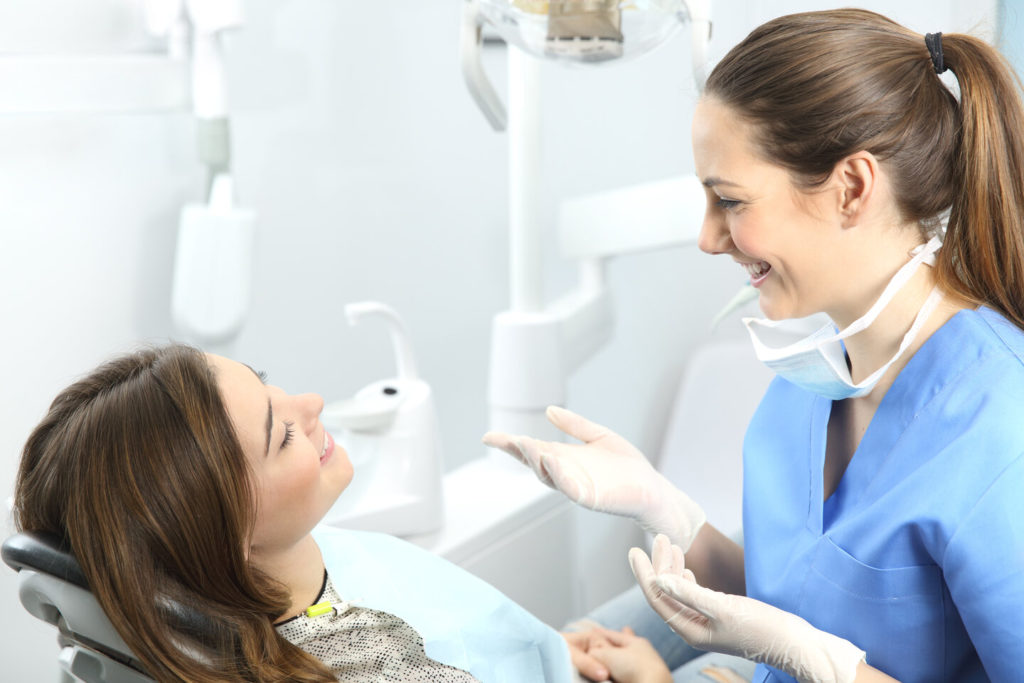
Though you may not think about that often, the mouth is an important part of our everyday lives. It allows us to eat our favorite foods, drink our favorite beverages, communicate with loved ones, sing our favorite songs, and so much more. The mouth is an invaluable part of the body, but have you ever wondered what parts it’s made up of? Read on to learn about the different parts of the mouth and how they all work together to let you live your life to the fullest!
Teeth
The teeth allow you to tear and chew up your food. They also maintain your facial shape and prevent sagging. There are four different types of teeth, including:
- Incisors – the front eight teeth (four on top and four on the bottom) that are most visible
- Canines – the four sharpest teeth in the mouth that let you rip and tear food apart
- Premolars (bicuspids) – located next to the canines (four on top and four on the bottom) and let you chew and grind up your food
- Molars –allow you to chew and grind up food; 12 total, four of which are wisdom teeth
Tongue
The tongue is made of eight different intertwined muscles. It’s incredibly strong and consists of approximately 10,000 taste buds, which are replaced every two weeks. Your tongue allows you to speak clearly, eat and swallow food, and taste all the tasty treats the world has to offer.
Lips and Cheeks
Consisting of skin, connective tissue, and muscles, the lips and cheeks help hold your teeth in place. They also keep saliva and food and from falling out of your mouth, allow you to breathe and speak comfortably, and let you smile and make other facial expressions.
Gums
The gums protect the roots of the teeth and hold your pearly whites in place. Though they may play a big part in keeping your teeth in place, part of the jaw called the alveolar bone is what actually holds your teeth in your mouth.
Salivary Glands
The salivary glands make saliva and drain it into the mouth through ducts. Saliva keeps the mouth moist and helps wash away bacteria and food particles. It also neutralizes acids in the mouth, which helps protect your tooth enamel from developing cavities and allows you to chew, swallow, and speak with ease. There are hundreds of minor salivary glands and three paired major salivary glands, including:
- Parotid – the largest of the salivary glands which produce 20% of the total saliva in the mouth. An infection of these is called mumps
- Submandibular – previously known as the submaxillary glands, these located beneath the lower jaw and produce 65-70% of saliva
- Sublingual – these are located under the tongue and produce about 5% of saliva that enters the oral cavity
Temporomandibular Joints
Also called the TMJ, these joints are located between the lower jaw and the temporal bone. They are connected to your skull and let you chew, swallow, open and close your mouth, and speak.
Keep the parts of the mouth functioning properly by maintaining good oral health and visiting your dentist every six months. By doing this, you’ll be able to enjoy the many benefits the mouth provides for years to come!
About the Author
Dr. Angela Courtney, Dr. Christy Cox, and their talented team of Columbus oral health experts at Artistry Smile Center aim to help patients learn how to properly care for the many parts of their mouths. By doing this, they help beautify the smiles of their city one person at a time! To make an appointment or for more information on the parts of the mouth, call Artistry Smile Center at (614) 451-7393 or visit their website.


